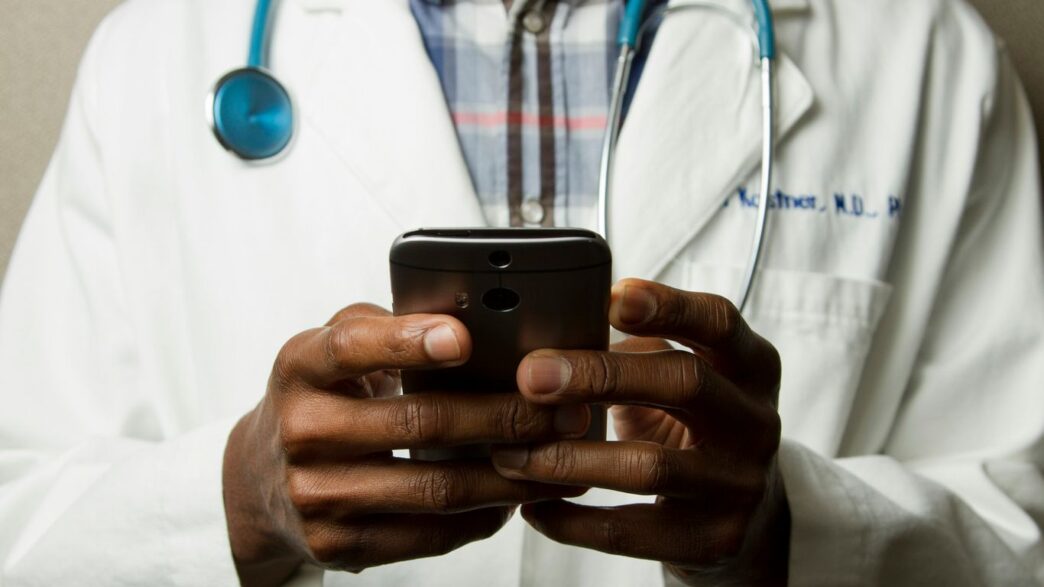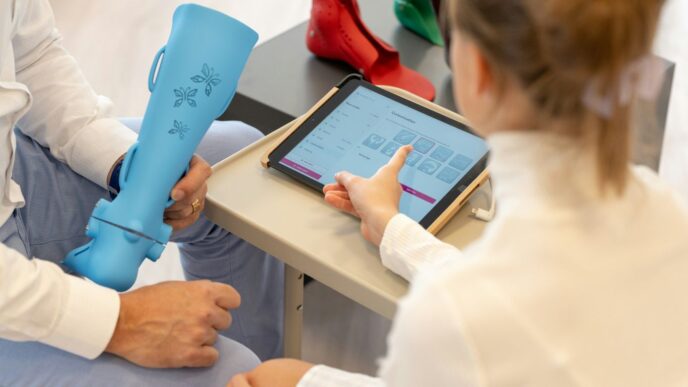It feels like everything is moving online these days, and healthcare is no different. We’re seeing more and more talk about software as a service, or SaaS, and how it’s changing the way doctors and hospitals work. This isn’t just about fancy new apps; it’s about making things run smoother, keeping patient info safe, and ultimately, giving people better care. Let’s break down what this shift to software as a service in healthcare really means.
Key Takeaways
- Software as a Service (SaaS) offers cloud-based tools that make healthcare management more flexible and accessible.
- SaaS helps improve patient records (EHRs) and makes administrative tasks like scheduling and billing much simpler.
- By using SaaS, healthcare providers can connect better with patients, offering more personalized care plans and remote monitoring.
- SaaS solutions are designed with strong security to protect patient data and meet important healthcare rules.
- Adopting SaaS can save money compared to older software systems and easily adjust to a healthcare facility’s changing needs.
Understanding Software as a Service in Healthcare

So, what exactly is this Software as a Service, or SaaS, thing everyone’s talking about in healthcare? Basically, it’s a way to get and use software over the internet, instead of buying and installing it all on your own computers. Think of it like streaming movies instead of buying DVDs. You pay a subscription, and you can access the program from pretty much anywhere. This model is really changing how healthcare organizations manage things.
Definition and Explanation of SaaS
SaaS in healthcare means using cloud-based applications for tasks like managing patient records, scheduling appointments, or handling billing. Instead of a hospital buying a massive software package and all the servers to run it, they subscribe to a service. This service is hosted by a provider, and healthcare staff just log in through a web browser. It’s a big shift from the old way of doing things, where software was often stuck on specific machines and hard to update. This cloud-based approach makes software more accessible and adaptable. It’s a flexible solution that can grow or shrink with a clinic’s needs.
The Current State of Healthcare Management
Let’s be honest, managing a healthcare system can be a real headache. Traditional methods often involve a lot of paperwork, clunky databases, and systems that don’t talk to each other very well. This can lead to:
- Administrative Overload: Staff spend too much time on tasks that could be automated, like data entry and filing.
- Data Silos: Patient information might be scattered across different departments or systems, making it hard to get a complete picture of a patient’s health.
- Limited Access: Getting the right information to the right person at the right time can be a challenge, especially when people are working remotely or across different locations.
- High Costs: Maintaining on-premise software and hardware can be expensive, with big upfront costs and ongoing maintenance fees.
These issues don’t just make life harder for doctors and nurses; they can also impact patient care and outcomes. It’s clear that the old ways just aren’t cutting it anymore in today’s fast-paced medical world.
Challenges in Traditional Healthcare Systems
Healthcare systems have always had their share of problems. For years, getting different software systems to work together has been a major hurdle. Imagine trying to get your electronic health record (EHR) system to talk to the billing software, or the scheduling system. It’s often a complicated and expensive process, if it’s possible at all. This lack of integration means that data gets stuck in different places, making it difficult to get a full view of a patient’s journey. Plus, updating these older systems can be a nightmare, often requiring significant downtime and investment. Many organizations are finding that the cost and complexity of managing these traditional systems are just too high, pushing them to look for more modern solutions like SaaS for clinical trials.
Transforming Patient Care with SaaS
So, how exactly is this Software as a Service thing changing how we take care of people? It’s actually pretty significant. Think about it – the old ways of doing things, like shuffling through piles of paper records or dealing with clunky, outdated software, just don’t cut it anymore. SaaS is stepping in to fix a lot of that.
Enhancing Electronic Health Records (EHR) Systems
One of the biggest impacts is on Electronic Health Records, or EHRs. Before, getting your medical history could be a real hassle, involving faxes and phone calls. Now, with SaaS-based EHRs, doctors and nurses can actually access your important health information pretty much instantly. This means they can make better decisions, faster, because they’ve got the full picture right there. It makes things more accurate and complete, which is exactly what you want when it comes to your health.
Optimizing Administrative Processes
Beyond just patient records, SaaS is cleaning up a lot of the behind-the-scenes administrative work that can bog down hospitals and clinics. Things like scheduling appointments, which used to take ages, are now way simpler with easy-to-use online tools. Even the nightmare of billing and insurance claims is getting smoother. Errors are reduced, and getting paid back for services happens quicker. It’s like taking a big sigh of relief for the folks managing the paperwork.
Improving Patient Engagement and Experience
This is where things get really interesting for us as patients. SaaS is making it easier to connect with healthcare providers, no matter where you are. Think about virtual visits – you can talk to your doctor from your couch! Plus, there are apps that help you keep track of your own health, remind you to take your meds, and give you access to your personal health info. It’s all about making healthcare more accessible and putting you more in control of your well-being. It really helps bridge those gaps where communication might have fallen through before, creating a more connected experience for everyone involved.
The Shift Towards Value-Based Healthcare
So, we’ve talked about how SaaS can make things run smoother day-to-day. But what about the bigger picture? Healthcare is slowly but surely moving away from just treating sickness to actually focusing on keeping people healthy and getting them the best results possible. This is what we call value-based healthcare, and it’s a pretty big deal.
SaaS as a Driver for Value-Based Care
Think about it: traditional healthcare often paid doctors and hospitals for doing stuff – more tests, more procedures, you get the idea. Value-based care flips that. Now, the payment is tied to how well patients actually do. Did they get better? Did they stay healthy? Did they avoid needing to come back to the hospital? SaaS plays a huge role in making this shift actually work. It gives us the tools to track those outcomes, share information easily between different doctors and clinics, and really see if the care provided is making a difference. Without good tech, trying to measure value would be like trying to count sand.
Focusing on Patient Outcomes
This is where SaaS really shines. Instead of just having records scattered everywhere, SaaS platforms can pull all that patient information together. This means a doctor can see a patient’s full history, not just what happened in their office last week. This connected view helps in a few ways:
- Better Diagnosis: With all the data in one place, it’s easier to spot patterns and make a more accurate diagnosis.
- Personalized Treatment: Knowing a patient’s history, lifestyle, and previous treatments allows for care plans tailored specifically to them.
- Preventive Care: By tracking health trends, providers can step in before a small issue becomes a big one, saving the patient trouble and the system money.
Creating a Comprehensive Care Continuum
What’s a care continuum? It’s basically the whole journey a patient takes with their health, from seeing a specialist to getting physical therapy at home. Traditionally, these steps could feel pretty disconnected. You’d get a referral, then have to find a new doctor, explain everything all over again. SaaS helps tie these pieces together. It creates a connected environment where information flows smoothly between different providers, and even between the patient and their care team. This means less repeating yourself, fewer missed steps, and a much smoother experience for everyone involved. It’s about making sure that no matter where a patient is in their health journey, they’re getting the right care at the right time, all working towards that goal of better health outcomes.
Leveraging SaaS for Enhanced Communication and Coordination
Communication in healthcare is different from any other industry; it’s part paperwork, part chaos, and part hope you got the message across. SaaS tools are trying to clean up that mess. These digital platforms make it easier for doctors, nurses, and administrative staff to talk to each other in real time, wherever they are. It’s not just about sending a message—it’s about making sure it lands in the right place, at the right time.
Features that modern SaaS systems bring to communication include:
- Secure instant messaging between care teams
- Automated notifications for prescription or treatment updates
- Shared dashboards to track patient status and schedules
- Integration with Electronic Health Records (EHR)
If you’re curious how tools stack up, top healthcare messaging systems are compared here for things like workflow compatibility and compliance.
Addressing Patient Engagement Gaps
One of the biggest headaches for providers is when patients just… don’t show up or don’t follow through. Missed appointments, ignored follow-ups, skipped treatments—it all adds up. SaaS helps by making communication easier, but also by making it smarter.
Here’s how SaaS steps in:
- Automated reminders—so patients don’t forget appointments
- Two-way messaging—for quick questions and feedback
- Patient portals—so people can see their history, test results, and care plans whenever they want
The idea is simple: the more connected a patient feels, the more likely they are to stick with their care plan (and actually show up).
Facilitating Connected Care Environments
Healthcare is not just about one doctor and one patient anymore. It’s teams, sometimes cities apart, all needing to share information. SaaS acts like a bridge—connecting everything together, constantly syncing so nothing falls through the cracks. The result is a “connected care” environment, where everyone stays in the loop.
A connected care setup typically brings:
- Unified patient records updated in real time
- Centralized care plans that travel with the patient
- Easier transitions if someone gets referred to another provider
By bringing everyone onto the same page, SaaS cuts down on duplicate work, mistakes, and delays. The patient’s experience improves, and the people providing care can focus more on actual medicine, not on hunting down info.
Data Security and Regulatory Compliance in Healthcare SaaS
When we talk about putting patient information into the cloud with Software as a Service (SaaS), the first thing that pops into most people’s minds is security. And honestly, that’s a good thing. Healthcare data is super sensitive, right? We’re talking about personal health histories, diagnoses, all that stuff. So, making sure it’s locked down tight is non-negotiable.
Robust Security Measures for Patient Data
SaaS providers that work with healthcare organizations have to be really good at protecting this data. It’s not just about having a password; it’s about layers of security. Think encryption, both when the data is sitting still and when it’s being sent around. Then there are things like regular security audits and making sure only the right people can access specific information. It’s a constant effort, kind of like keeping your house secure – you don’t just lock the door once and forget about it. Many SaaS companies are now building security right into their platforms from the ground up, which is a much better approach than trying to bolt it on later. This is why organizations are increasingly looking at cloud solutions, as they can often provide a higher level of security than what a single hospital or clinic could manage on its own. For example, HIPAA compliance within a SaaS environment is a major focus for providers serving the US market.
Ensuring Compliance with Healthcare Regulations
Beyond just general security, there are specific rules healthcare providers have to follow. In the United States, the big one is HIPAA (the Health Insurance Portability and Accountability Act). This law sets the standards for how patient health information should be protected. SaaS solutions need to be built to meet these requirements. This means everything from how data is stored and accessed to how it’s backed up and what happens if there’s a breach. It’s a complex web of rules, and staying on top of them is a big job. Different regions have their own versions, like GDPR in Europe, so global providers have an even bigger challenge. It’s not just about ticking boxes; it’s about genuinely protecting patient privacy.
Building Trust Through Secure Implementations
Ultimately, for SaaS to really take hold in healthcare, patients and providers need to trust the systems. When a SaaS solution is implemented correctly, with strong security and clear compliance, it builds that confidence. We’ve seen examples where healthcare organizations have successfully moved to SaaS platforms and seen improvements in both security and their ability to meet regulatory demands. This shows that it’s not just possible, but often beneficial, to use cloud-based services for sensitive health information. The key is choosing the right partners and understanding that security and compliance are ongoing processes, not one-time fixes.
Financial Benefits and Scalability of SaaS Adoption
Let’s talk about the money side of things. Moving to Software as a Service (SaaS) in healthcare isn’t just about fancy new tech; it actually makes a lot of financial sense. Think about the old way of doing things – buying software licenses, setting up servers, paying for maintenance. That’s a huge chunk of cash upfront, right? SaaS flips that model. You pay a subscription, usually monthly or yearly, for what you actually use. This means you’re shifting from spending big capital money to more predictable operational costs. It makes advanced tools way more accessible, especially for smaller clinics or practices that don’t have massive IT budgets. It’s a smarter way to manage your spending on technology.
Cost-Efficiency Through Subscription Models
The subscription model is a game-changer. Instead of a massive bill to get started, you pay as you go. This predictability helps with budgeting and frees up cash flow. It’s like switching from buying a whole car to using a ride-sharing service – you pay for the trips you take, not for the car sitting in the garage. This approach is particularly helpful when you’re trying to figure out how to afford new systems without breaking the bank. Many organizations find that over time, this model is significantly cheaper than owning and maintaining on-premise software. It’s a big reason why so many industries, like finance, are jumping on board with Fintech SaaS.
Shifting from Capital Expenditure to Operational Expenditure
This shift is pretty significant. Capital expenditure (CapEx) is money spent on acquiring or upgrading physical assets, like servers or software licenses. Operational expenditure (OpEx), on the other hand, is the ongoing cost of running the business, like salaries or utility bills. SaaS moves healthcare IT spending from CapEx to OpEx. Why does this matter? Well, OpEx is often easier to manage and can be more flexible. It also means you’re not stuck with outdated hardware or software because you’ve already sunk a ton of money into it. You can more easily swap out or upgrade services as needed.
Unparalleled Scalability for Evolving Needs
Healthcare isn’t static. Patient numbers go up and down, new services are added, and technology keeps changing. SaaS solutions are built for this kind of flexibility. Need more storage or user access during a busy flu season? You can scale up quickly. Things slow down? You can scale back down just as easily. This adaptability is huge. You’re not locked into a system that’s too big or too small for your current needs. It means your technology can grow and change right alongside your practice or hospital, without requiring a whole new IT overhaul every time. This makes it easier to manage fluctuating patient volumes and adapt to new healthcare initiatives without major headaches.
Future Trends and Innovations in Healthcare SaaS

So, what’s next for Software as a Service in healthcare? It’s not just about making things run smoother today; it’s about building a healthier tomorrow. The tech world moves fast, and healthcare is right there with it, thanks to cloud-based solutions.
Integration of Artificial Intelligence and Machine Learning
Think about AI and machine learning. These aren’t just buzzwords anymore. In healthcare SaaS, they’re starting to do some pretty amazing things. We’re seeing applications that can analyze patient data to spot potential health issues before they become serious problems. It’s like having a super-smart assistant that can sift through mountains of information to find patterns we might miss. This means more accurate diagnoses and treatment plans that are truly tailored to each person. This predictive power is a game-changer for preventative care. It helps providers stay ahead of the curve, which is always better than playing catch-up when it comes to health.
The Evolution of Telemedicine and Virtual Consultations
We’ve all heard about telemedicine, right? Well, SaaS is making it even better. It’s not just about video calls anymore. These platforms are getting smarter, allowing for remote patient monitoring that can track vital signs and other health metrics from the comfort of a patient’s home. This is huge for people with chronic conditions or those who live far from medical facilities. It means more frequent check-ins and quicker responses if something seems off. Plus, it makes accessing healthcare a lot easier for everyone, cutting down on travel time and costs. It’s all about making care more accessible and convenient, which is a big win for patients.
Personalized Care Plans and Remote Monitoring
This is where things get really interesting. SaaS platforms are becoming incredibly good at taking all the data – from EHRs, wearable devices, and even patient-reported symptoms – and using it to create truly personalized care plans. Instead of a one-size-fits-all approach, treatments can be adjusted based on an individual’s specific needs and how they’re responding. Remote monitoring tools, often integrated into these SaaS solutions, allow healthcare teams to keep a close eye on patients outside of traditional appointments. This continuous oversight helps catch subtle changes early, potentially preventing hospital readmissions and improving overall health outcomes. It’s a more proactive and patient-centered way to manage health, and it’s only going to become more common as the technology advances. You can find more about current healthcare technology trends at healthcare technology trends.
Wrapping Up: The Road Ahead for Patient Care
So, where does all this leave us? It’s pretty clear that software delivered over the internet, or SaaS, is changing how we do healthcare. It helps connect things better, makes processes smoother, and can even make care more personal. While there are still some bumps in the road, like getting everyone comfortable with new tech and making sure data stays safe, the benefits are becoming too big to ignore. As more healthcare places get on board, we’re likely to see even better ways to manage health and help patients get the care they need, when they need it. It’s a big shift, but one that seems to be pointing towards a more efficient and patient-focused future for everyone involved.
Frequently Asked Questions
What exactly is Software as a Service (SaaS) in healthcare?
Think of SaaS like renting software instead of buying it. Instead of installing programs on your own computer, you use them over the internet. For doctors and hospitals, this means they can use special healthcare software without needing to buy and manage expensive computer systems themselves. It’s like using an app on your phone – you just log in and use it!
How does SaaS help make healthcare better for patients?
SaaS can make healthcare run more smoothly. It helps doctors keep track of patient information better with electronic health records, makes appointments easier to manage, and can even help patients connect with their doctors through online visits. This means you might get faster service and more personalized care.
Is my health information safe with healthcare SaaS?
Yes, keeping your health information safe is super important. Companies that provide healthcare SaaS have to follow strict rules, like HIPAA, to protect your data. They use strong security measures, like special locks and guards for digital information, to make sure only the right people can see it.
Can small clinics and hospitals afford SaaS?
One of the great things about SaaS is that it’s usually cheaper to start using than buying traditional software. Instead of a big upfront cost, you pay a smaller amount regularly, like a monthly subscription. This makes it easier for smaller places to get access to the same modern tools that bigger hospitals use.
How does SaaS help doctors work together better?
SaaS makes it easier for different doctors and nurses involved in your care to share information. Imagine everyone on your healthcare team having access to the same updated notes about your health. This helps them coordinate your treatment better and avoid mistakes, leading to a more connected care experience for you.
What’s next for SaaS in healthcare?
The future looks exciting! We’ll likely see even smarter software using things like Artificial Intelligence to help doctors make diagnoses. Also, online doctor visits (telemedicine) will become even more common, and software will help create very personalized care plans for each patient, possibly even monitoring them from home.














